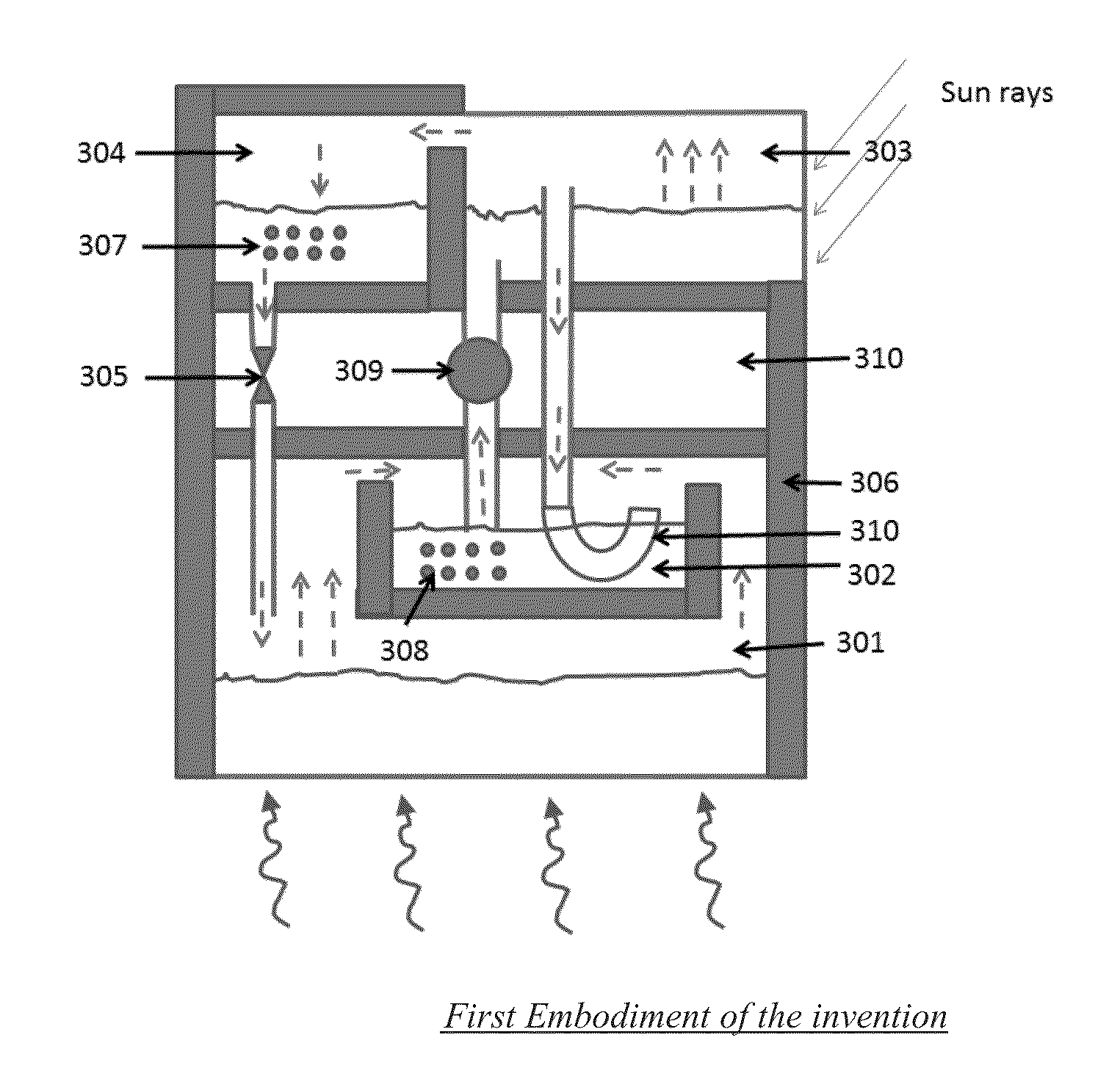Solar cooling system integrated in building envelope
a solar energy and building envelope technology, applied in the field of solar energy-powered cooling systems, can solve the problems of reduced cooling capacity reduced cooling efficiency of solar energy chillers, and limited installation of such systems, so as to increase the cooling capacity and reduce the effect of solar energy consumption and cooling less
- Summary
- Abstract
- Description
- Claims
- Application Information
AI Technical Summary
Benefits of technology
Problems solved by technology
Method used
Image
Examples
Embodiment Construction
[0026]FIG. 3 is a schematic drawing of the 1st embodiment of the refrigeration system. 301 is the evaporation chamber which is in thermal contact with the region to be cooled (denoted by region C). Let the target temperature of region C be denoted by Tc. The temperature in chamber 301, denoted by Te should be such that Tec. From the thermodynamic properties of the refrigerant, the pressure inside the chamber 301, denoted by Pe is determined so that Te is the saturation temperature of the refrigerant in chamber 301. Chamber 301 absorbs heat from region C because of thermal contact between then causing the refrigerant to evaporate. On evaporation, refrigerant absorbs heat. Chamber 302 is the absorber chamber containing concentrated absorber, which is capable of absorbing refrigerant vapour. Presence of concentrated absorber also promotes evaporation of the refrigerant in chamber 301. Evaporated refrigerant from chamber 301 gets absorbed to the absorber in chamber 302. Absorption of re...
PUM
 Login to View More
Login to View More Abstract
Description
Claims
Application Information
 Login to View More
Login to View More - R&D
- Intellectual Property
- Life Sciences
- Materials
- Tech Scout
- Unparalleled Data Quality
- Higher Quality Content
- 60% Fewer Hallucinations
Browse by: Latest US Patents, China's latest patents, Technical Efficacy Thesaurus, Application Domain, Technology Topic, Popular Technical Reports.
© 2025 PatSnap. All rights reserved.Legal|Privacy policy|Modern Slavery Act Transparency Statement|Sitemap|About US| Contact US: help@patsnap.com



